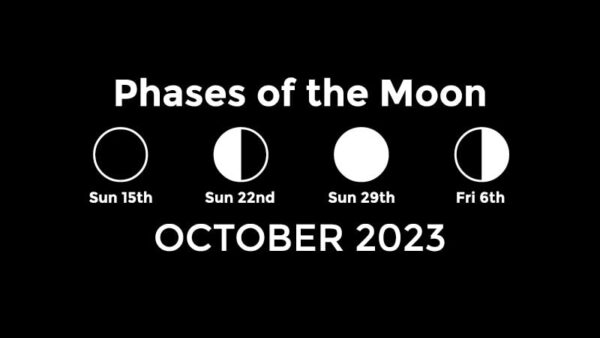Find out what to go out and look at this month
Planets:
In October, Mercury and Mars remain concealed by the brilliant glare of the Sun, making them invisible to the naked eye. Meanwhile, Venus will embark on an intriguing celestial journey through the Leo constellation (The Lion). On the morning of Tuesday, October 24th, Venus achieves its greatest elongation in the West. From this point onwards, Venus will gradually make its way closer to the Sun in our morning sky.
The night sky offers a captivating spectacle this month, with Jupiter and Saturn taking centre stage. Jupiter, the largest planet in our solar system, can be observed throughout the night as it gracefully moves between the constellations of Cetus (The Sea Monster), and Aries (The Ram). Saturn, with its stunning rings, graces the constellation of Aquarius (The Water Bearer), for most of the night and descends toward the horizon in the early morning hours.
For those keen on exploring the outer reaches of our solar system, Uranus makes an appearance in the Taurus constellation (The Bull), late in the evening throughout October. Neptune, on the other hand, can be found nestled between the constellations of Pisces (The Fish), and Cetus, providing a unique opportunity for stargazers to spot this distant ice giant.
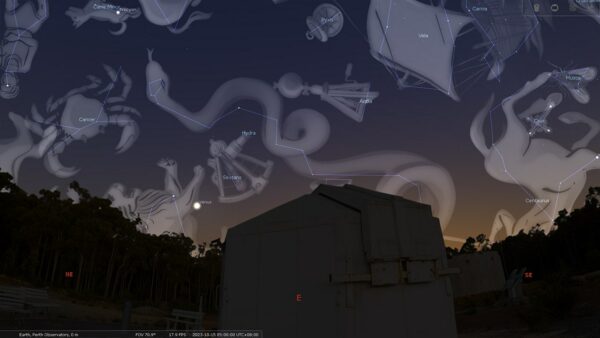
|
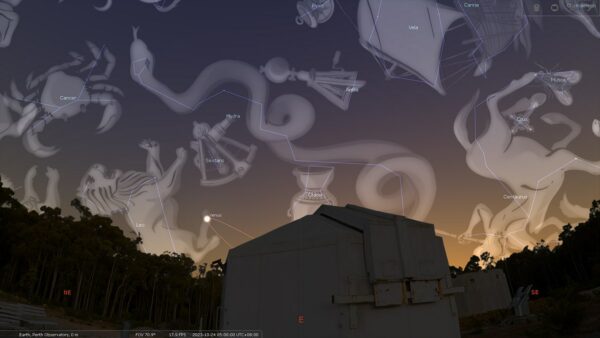
|
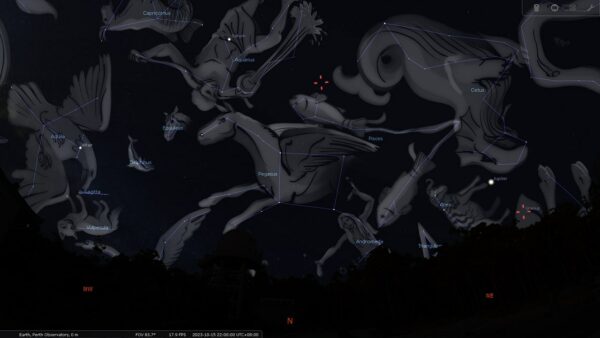
|
| Planet | When It Rises Or Sets |
|---|---|
| Mercury | Lost in the Sun’s glare |
| Venus | At the start of October, it’ll rise at 03:42 am (AWST), and by the end of the month, it’ll rise at 03:14 am (AWST) |
| Mars | Lost in the Sun’s glare |
| Jupiter | At the start of October, it’ll rise at 09:00 pm (AWST), and by the end of the month, it’s viewable throughout the night |
| Saturn | At the start of October, it’ll set at 04:29 am (AWST), and by the end of the month, it’ll set at 02:28 am (AWST) |
| Uranus | At the start of October, it’ll rise at 09:40 pm (AWST), and by the end of the month, it’ll rise at 07:38 pm (AWST) |
| Neptune | At the start of October, is viewable throughout the night, and by the end of the month, it’ll set at 03:34 am (AWST) |
Conjunctions And Occultations:
Conjunctions involve object(s) in the Solar System and/or more distant objects, such as a star. It’s an apparent phenomenon in which multiple objects which aren’t close together appear close in the sky and it’s caused by the observer’s perspective.
In an occultation, an object passes across the line of sight between an observer and another object. A solar eclipse is an occultation of the Sun by the Moon.
- 02/10/23 – Conjunction of The Moon and Jupiter (Where to look)
- 03/10/23 – Conjunction of The Moon, Jupiter, Uranus, and the Pleiades (Where to look)
- 04/10/23 – Conjunction of The Moon, Pleiades, and Aldebaran (Where to look)
- 05/10/23 – Conjunction of The Moon, and Elnath (Where to look)
- 07/10/23 – Conjunction of The Moon, Castor, and Pollux (Where to look)
- 09/10/23 – Conjunction of Venus, and Regulus (Where to look)
- 18/10/23 – Conjunction of The Moon and Antares (Where to look)
- 24/10/23 – Conjunction of The Moon and Saturn (Where to look)
- 29/10/23 – Conjunction of The Moon, and Jupiter (Where to look)
- 30/10/23 – Conjunction of The Moon, Jupiter, and Uranus (Where to look)
- 31/10/23 – Conjunction of The Moon, and the Pleiades (Where to look)
Astronomical Events This Month:
The Southern Taurid Meteor Shower:
The Southern Taurid Meteor Shower is set to grace our night skies from September 10th to November 2nd, with its peak performance anticipated on the night of October 13th/14th. For the best chance to see them, step outside at around 01:00 am (AWST), as that’s when the radiant point of the Southern Taurids will reach its zenith in the northern section of our night sky. In the forthcoming 2023 display, you can expect to witness approximately 5-10 meteors per hour, thanks to the fortunate proximity of the Moon to its New Moon phase, which ensures no light pollution from it.
This captivating celestial show originates from Comet 2P/Encke, a periodic comet known for completing an orbit around the Sun every 3.3 years. Notably, much like Halley’s Comet, it bears the name of the individual who calculated its orbital path, rather than the one who first spotted it. The history of Comet Encke dates back to January 17, 1786, when Pierre Méchain initially recorded its presence. However, it wasn’t until 1819 that Johann Franz Encke meticulously computed its orbit, unveiling its true periodic nature.
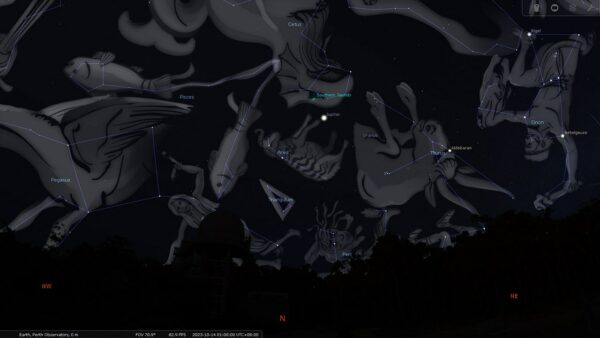
|
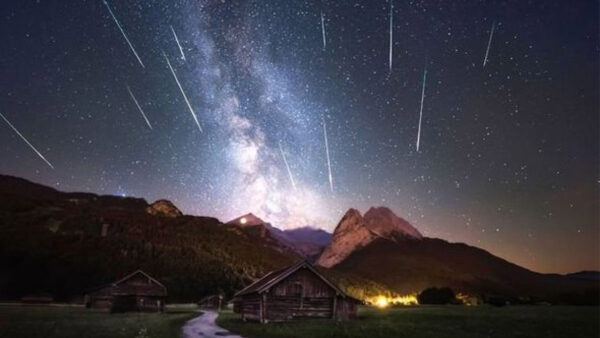
|
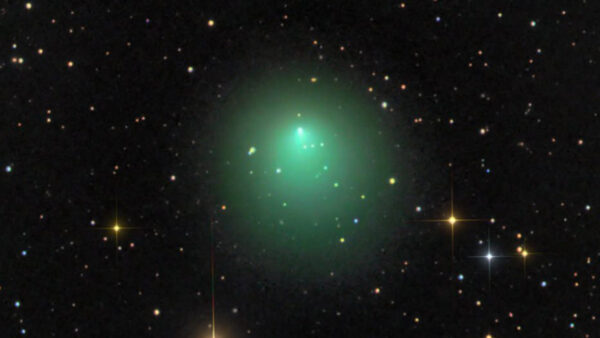
|
Annular Solar Eclipse:
On Saturday, October 14th, an extraordinary celestial event is set to unfold as the Moon positions itself directly between the Earth and the Sun. This captivating occurrence will give rise to an Annular Solar Eclipse, a rare spectacle that will predominantly grace the skies of North and Central America. During an Annular Solar Eclipse, the Moon takes centre stage by aligning precisely with the Sun, albeit not entirely covering it. Instead, it allows the Sun’s radiant outer edges to create a mesmerizing “ring of fire,” known as an annulus (derived from the Latin word for ring), encircling the Moon.
The Moon’s apparent smaller size during this phenomenon is a result of its placement near its farthest point from Earth, referred to as apogee. This celestial synergy promises an awe-inspiring visual display, offering a remarkable glimpse into the intricate dance of our cosmic neighbours.
| Event | UTC Time | Time in Perth (AWST) |
|---|---|---|
| First location to see the partial eclipse begin | 14th Oct at 15:03:50 | 14th Oct at 11:03:50 pm |
| First location to see the full eclipse begin | 14th Oct at 16:10:11 | 15th Oct at 12:10:11 am |
| Maximum Eclipse | 14th Oct at 17:59:32 | 15th Oct at 01:59:32 am |
| Last location to see the full eclipse end | 14th Oct at 19:49:01 | 15th Oct at 03:49:01 am |
| Last location to see the partial eclipse end | 14th Oct at 20:55:16 | 15th Oct at 04:55:16 am |
Our friends at TimeandDate.com will be live-streaming the eclipse so we won’t miss out. To watch the live stream, you can click here.
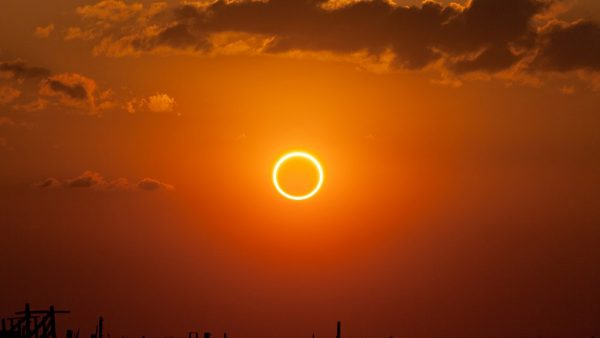
|
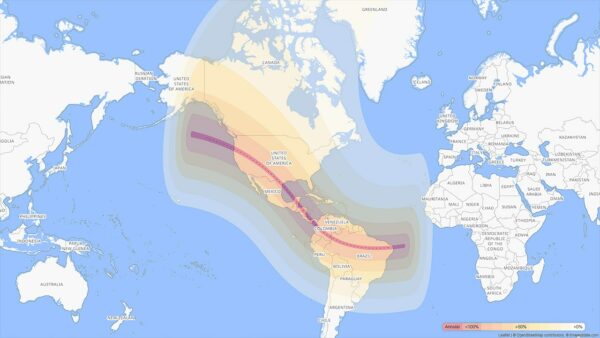
|
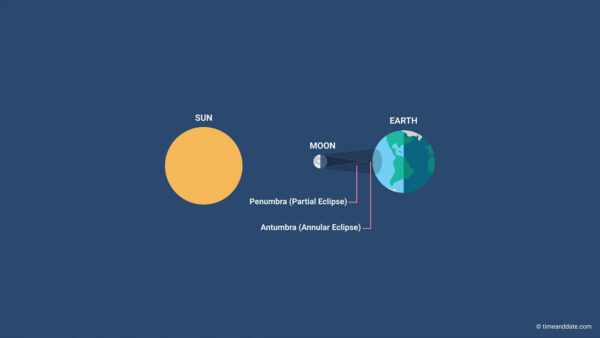
|
The Orionids Meteor Shower:
The Orionids Meteor Shower has captivated skywatchers for over two centuries, offering a timeless display of celestial wonder. This mesmerising event is a result of Earth’s journey through the remnants left behind by the iconic Comet Halley, a cosmic connection that has bestowed this shower with its name.
The encounter with the debris field commences around October 2nd, treating observers to sporadic meteors until November 7th. However, the grand spectacle reaches its zenith on the night of October 21st/22nd, promising a meteoric flurry that could grace the night sky with up to 10 meteors per hour, especially in areas devoid of light pollution. A celestial blessing for skywatchers this year is the Moon, which is poised to set shortly after the Orion constellation rises above the horizon, ensuring optimal viewing conditions.
To make the most of this celestial extravaganza, set your alarm for the early hours and venture out around 02:00 am (AWST). The key to witnessing the Orionids in all their glory is to gaze directly east around midnight and then shift your attention towards the North as the night progresses towards sunrise. This time-honoured celestial event promises a breathtaking experience for those willing to rise at these early hours and marvel at the wonders of the night sky.
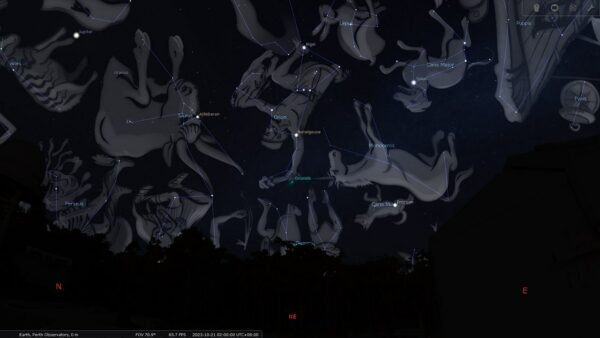
|
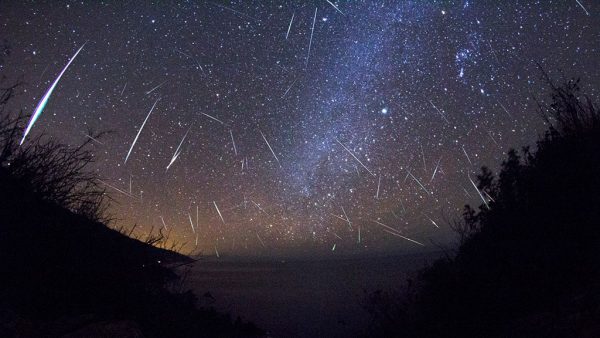
|
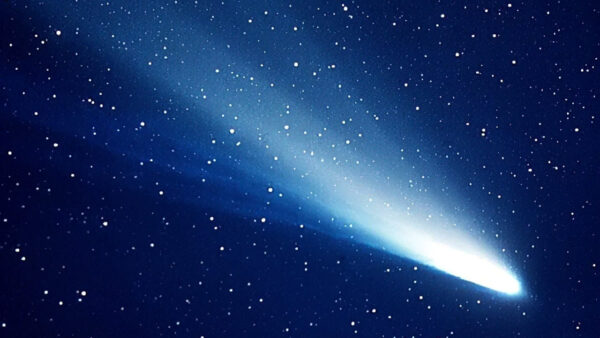
|
Partial Lunar Eclipse:
Mark your calendars for Sunday, October 29th, when a celestial spectacle is set to unfold. On this remarkable day, the Moon will gracefully position itself between the Earth and the Sun, giving rise to a Partial Lunar Eclipse that will be visible across vast swathes of the globe, including Europe, Asia, Australia, Africa, Antarctica, a significant portion of South America, and even some regions in North America.
During a Partial Lunar Eclipse, the Earth takes its place between the Sun and the Full Moon, though their alignment is not absolute. This celestial ballet results in only a portion of the Moon’s visible surface slipping into the Earth’s inner shadow, known as the Umbra. As the last lunar eclipse of 2023, this event holds particular significance for stargazers worldwide.
For those in Perth, the eclipse will last an hour and 17 minutes. Consequently, observers will catch only a glimpse of a small section of the Moon briefly ensconced within the Earth’s umbra. Nevertheless, this celestial phenomenon serves as a testament to the cosmic wonders that grace our night skies and offers a moment of reflection on the grandeur of our universe.
| Event | UTC Time | Time in Perth (AWST) | Visible in Perth |
|---|---|---|---|
| Penumbral Eclipse begins | 28 Oct at 18:01:48 | 29 Oct at 2:01:48 am | Yes |
| Partial Eclipse begins | 28 Oct at 19:35:25 | 29 Oct at 3:35:25 am | Yes |
| Maximum Eclipse | 28 Oct at 20:14:05 | 29 Oct at 4:14:05 am | Yes |
| Partial Eclipse ends | 28 Oct at 20:52:40 | 29 Oct at 4:52:40 am | Yes |
| Penumbral Eclipse ends | 28 Oct at 22:26:25 | 29 Oct at 6:26:25 am | No, below the horizon |
Our friends at TimeandDate.com and Perth Observatory will be live-streaming the eclipse so we won’t miss out. To watch the live stream, you can click here.
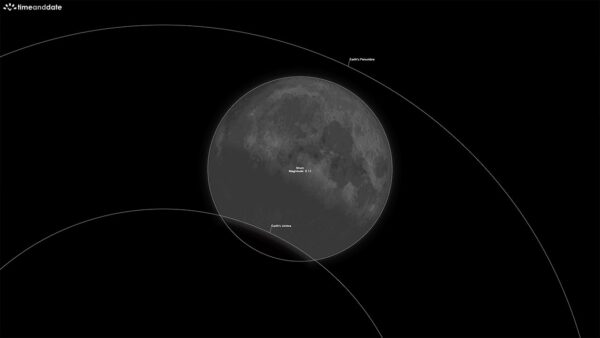
|
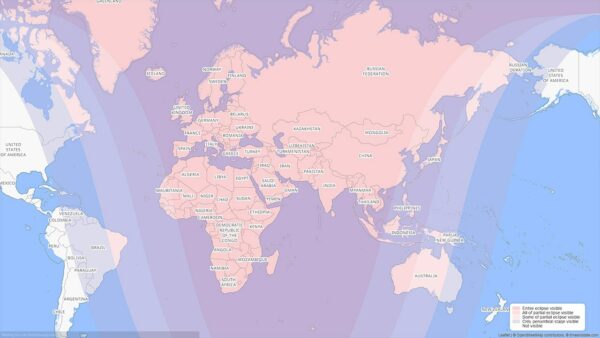
|
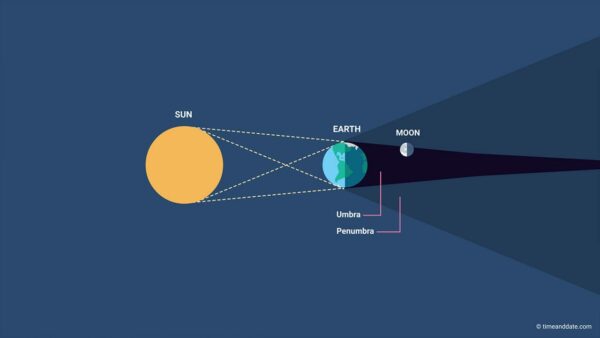
|
Things To Look At This Month:
Dumbbell Nebula:
The Dumbbell Nebula, also known as M27 or NGC 6853, stands as a striking example of a planetary nebula nestled within the constellation of Vulpecula, often referred to as “The Little Fox.” This celestial marvel is located at a staggering distance of 1,360 light-years from our vantage point, stretching across a vast expanse of 3 light-years.
With an age ranging between 9,000 to 15,000 years, the Dumbbell Nebula boasts a rich history, notably being the first planetary nebula discovered by the renowned Charles Messier back in 1764.
In essence, a planetary nebula represents a distinct class of emission nebulae. However, it differs significantly from star formation regions like the Orion Nebula (M42). Instead of fostering the birth of new stars, planetary nebulae mark the twilight years of a stellar entity. These objects emerge from the aftermath of a nova-style explosion, wherein a dying star expels a shell of material. Illuminated by the penetrating ultraviolet radiation emanating from the residual star, this shell transforms into an emission nebula, expanding outward as a vibrant and ethereal testament to the star’s final stages.
At the heart of the Dumbbell Nebula lies a diminutive yet compelling white dwarf star. It possesses a mere 5% of the Sun’s diameter and approximately half of its mass, epitomizing the transformation that stars undergo as they near the end of their life cycle. These planetary nebulae typically assume spherical shapes and appear diminutive, often resembling planetary disks when viewed through modest telescopes. Regrettably, their existence is short-lived, spanning just a few tens of thousands of years before fading into the cosmic tapestry and dwindling in density as they drift away from their progenitor star.
When scrutinized at high resolution, as was accomplished by the Hubble Space Telescope in 2001, the inner regions of the Dumbbell Nebula reveal an intricate tapestry of irregularities and knots. These substructures exhibit dimensions spanning 20 to 60 million kilometres and carry a mass equivalent to approximately three Earths each. The Dumbbell Nebula, with its captivating intricacies, stands as a testament to the profound beauty and complexity inherent in the cosmos.
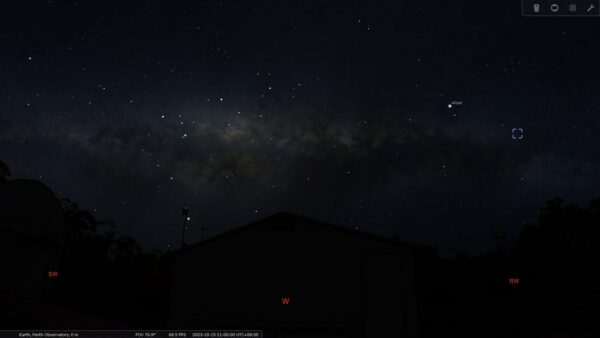
|
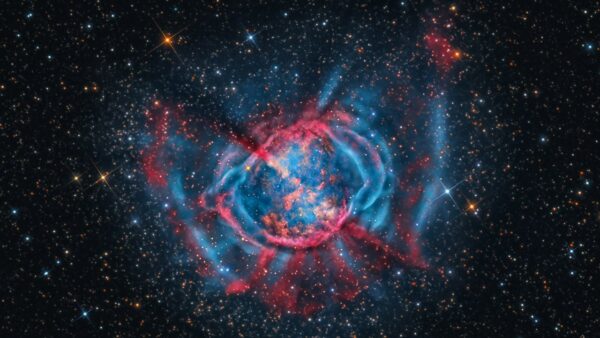
|
Wild Duck Cluster:
The Wild Duck Cluster, a celestial gem also known as M11 or NGC 6705, graces the constellation of Scutum, often referred to as “The Shield,” at a remarkable distance of 6,200 light-years from our home planet. This open cluster spans an expansive 25 light-years and plays host to a dazzling assembly of 2,900 stars, all with an estimated age of around 220 million years. The moniker “Wild Duck Cluster” finds its origins in the arrangement of its brighter stars, which collectively form a triangular pattern reminiscent of a squadron of ducks in flight, soaring through the cosmic expanse.
The cluster’s history is intertwined with the annals of astronomy. It was first documented by the diligent eye of German astronomer Gottfried Kirch from the Berlin Observatory in 1681. Later, in 1733, William Derham achieved the remarkable feat of resolving its constituent stars into individual points of light. The distinguished French astronomer Charles Messier added this stellar ensemble to his celebrated catalogue in 1764, marking it as a standout entry due to its distinction as the most remote open cluster visible to the naked eye within the Messier Catalogue.
Despite the apparent togetherness of its stars, the Wild Duck Cluster is, in reality, a congregation of stars only loosely bound to one another. As time unfurls, this cosmic gathering is destined to disperse, its members gradually ejected one by one. The inexorable force of gravity exerted by neighbouring celestial objects will contribute to this gradual dissolution. In a few million years, the Wild Duck Cluster will become a memory, a testament to the ever-evolving dynamics of our celestial neighbourhood.
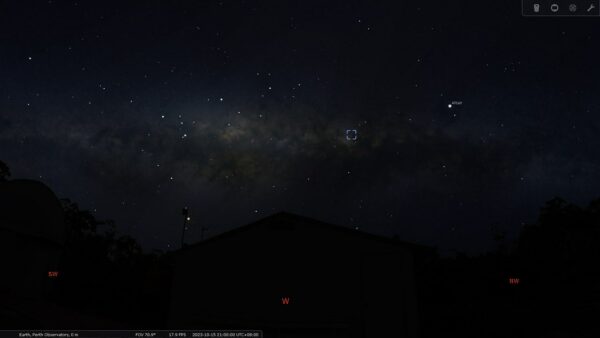
|
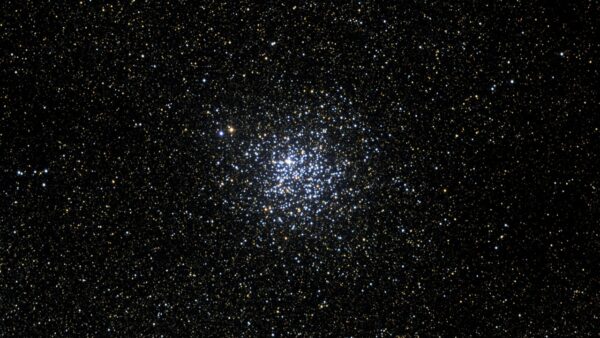
|
Great Sagittarius Cluster:
The Great Sagittarius Cluster (Messier 22), also known as M22 or NGC 6656, stands as a captivating globular cluster nestled in the vicinity of the Milky Way’s central bulge, residing at a staggering distance of 10,600 light-years from our home planet. This densely populated congregation of stars finds its celestial abode in the constellation Sagittarius, often associated with “The Archer,” and it boasts the distinction of being one of the brightest globular clusters gracing our night sky. M22 holds a prominent place in the annals of astronomical study, as it ranks among the first globular clusters to undergo extensive scrutiny. In terms of proximity, it is one of the closest globular clusters to our own Solar System, second only to Messier 4 in nearness. Spanning a colossal 100 light-years in diameter, this cluster plays host to an impressive gathering of approximately 83,000 stars, all of which have been in existence for a staggering 12 billion years.
Locating M22 is a delight for skywatchers, as it can be easily discerned with the naked eye under favourable conditions. Positioned a mere 2.5 degrees northeast of Kaus Borealis, the star adorning the apex of Sagittarius’ Teapot, M22 appears as a faint, ethereal patch of light when observed through binoculars. For those armed with small telescopes, the cluster’s brightest stars reveal themselves, while larger instruments unveil a breathtaking tapestry of stars that populate this celestial congregation.
As an intriguing twist, M22 showcases a distinct astronomical motion, receding from us at a velocity of 149 km/s. Its remarkable character doesn’t end there, as two black holes were confirmed within its confines by the Chandra X-ray telescope in 2012. This revelation hints at the possibility of an array of black holes ranging from 5 to 100 within the cluster, shedding light on the intriguing interplay between these enigmatic entities and the stars within the cluster. This interaction could well account for the cluster’s unusually expansive central region.
In an even more extraordinary turn of events, Messier 22 distinguishes itself as one of only four globular clusters known to house a planetary nebula. This rarity is shared only with Messier 15, situated in the constellation Pegasus, within Messier’s celebrated catalogue. The presence of these planetary nebulae within globular clusters adds a layer of mystique to the already captivating world of celestial formations, beckoning astronomers and stargazers alike to delve deeper into the cosmic wonders of our universe.
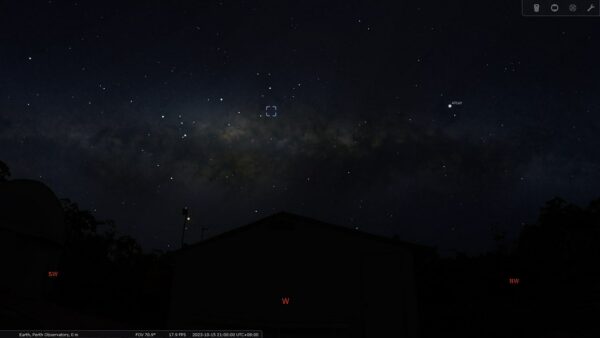
|
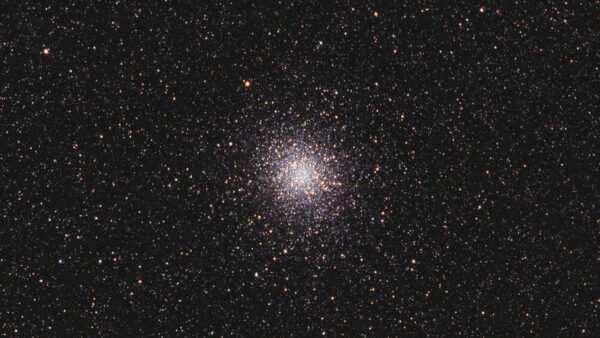
|
The String of Pearls:
The String of Pearls Galaxy, designated as NGC 55, emerges as a captivating example of a Magellanic-type barred spiral galaxy. Situated approximately 6.5 million light-years distant within the boundaries of the constellation Sculptor, also known as “The Sculptor’s Studio,” this celestial beauty spans an astounding expanse of 70,000 light-years.
What distinguishes NGC 55 from the multitude of galaxies adorning our night sky is its unique presentation; we observe it almost edge-on. This orientation lends an air of enigma to its appearance, with subtle asymmetries and discernible traces of dust near its central bulge. Adding to its allure, NGC 55 exhibits the dynamic process of star formation, further accentuating the vibrancy of its stellar population.
In some astronomical circles, this resplendent galaxy also goes by the moniker “The Whale Galaxy,” a whimsical name that conjures images of aquatic giants traversing the cosmic seas. NGC 55, along with its celestial neighbour NGC 300, holds the distinction of being among the closest galaxies to our own Local Group, a cosmic gathering that encompasses the Milky Way and neighbouring galaxies. The proximity between NGC 55 and NGC 300 suggests that they share a gravitational bond, forming an intriguing celestial duo that beckons exploration and inquiry.
The String of Pearls Galaxy, with its enigmatic presence and proximity to our galactic neighbourhood, continues to captivate the imagination of astronomers and stargazers alike, serving as a testament to the intricate and wondrous tapestry of the cosmos.
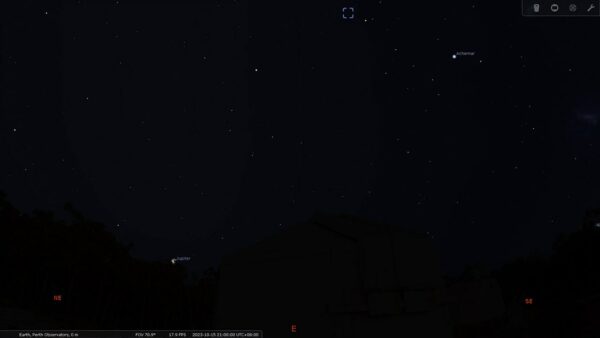
|
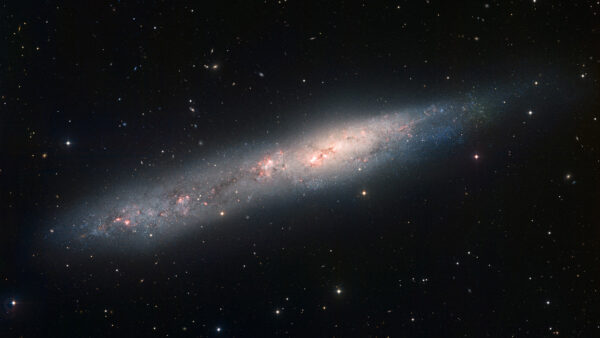
|
Phases Of The Moon:
